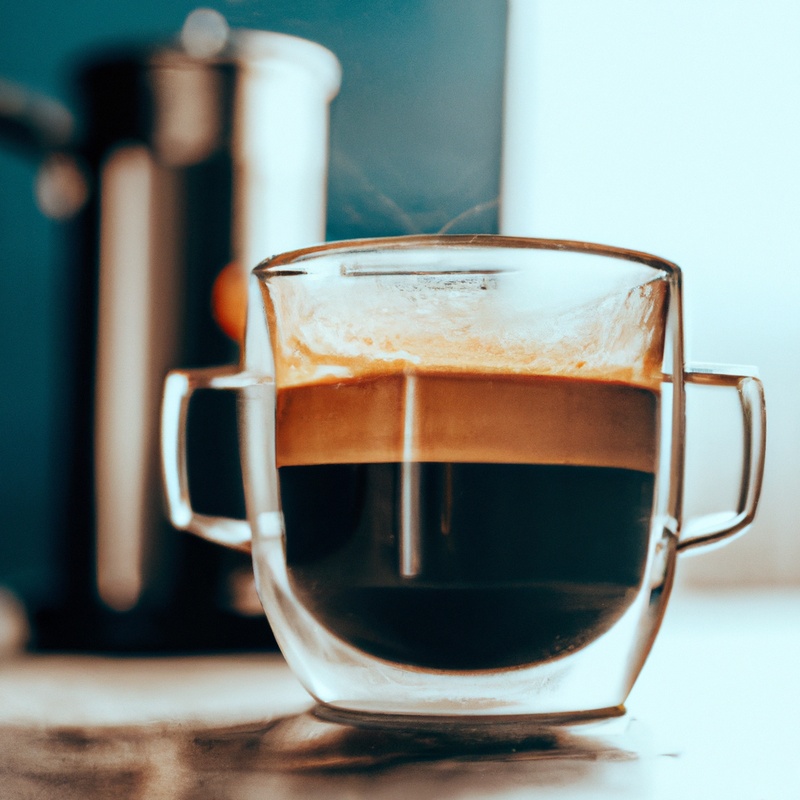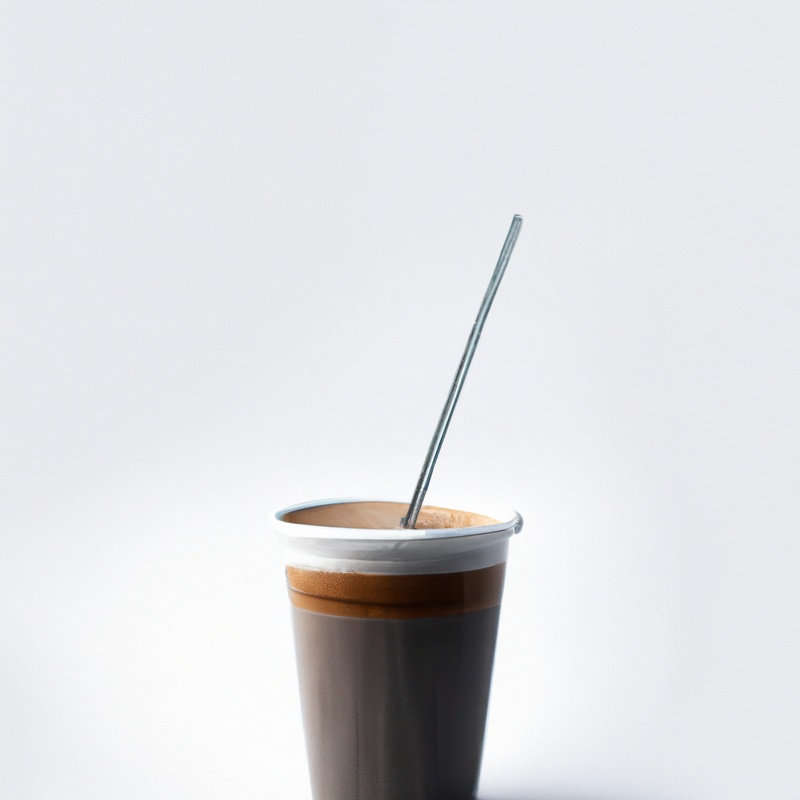Key Takeaways:
- Coarse ground coffee is essential for cold brew due to its slow extraction process.
- Dark roast coffee beans generally yield a smoother and more flavorful cold brew.
- The ideal brew time for cold brew coffee is between 12 to 24 hours.
- Experiment with different coffee-to-water ratios to find your preferred strength of cold brew.
Are you ready to take your coffee game to the next level?
Cold brew coffee is the cool, smooth and refreshing sibling of your regular cup of joe.
But here’s the million-dollar question: what kind of coffee is best for cold brew?
Don’t worry, my friend, I’ve got you covered.
In this article, we’ll explore the ideal coffee beans, origins, and even some flavorful experiments to elevate your cold brew experience.
Get ready to unlock the secrets of the perfect cold brew that will keep you coming back for more sip after sip.
Let’s dive in!
| Type of Coffee | Description |
|---|---|
| Coarse Ground | Absorbs water slowly, resulting in a smoother taste |
| Dark Roast | Rich, bold flavors with low acidity |
| Single Origin | Distinctive flavors from a specific geographic region |
| Blend | Combination of different types of coffee for balanced flavors |
What is cold brew coffee?
Cold brew coffee is a type of coffee made by steeping coffee grounds in cold water for an extended period of time, typically 12-24 hours, resulting in a smooth and less acidic flavor.
Definition and brewing process
Definition: Cold brew coffee is a method of preparing coffee that involves steeping coarsely ground coffee beans in cold water for an extended period of time, typically 12-24 hours.
This results in a smooth, less acidic coffee concentrate that can be diluted with water or milk for a refreshing iced coffee.
Brewing Process: To make cold brew coffee, you will need coarsely ground coffee beans and cold water.
Start by adding the coffee grounds to a jar or container, then pour in the cold water.
Stir gently to ensure all the coffee grounds are saturated.
Next, cover the container and let it sit at room temperature or in the refrigerator for 12-24 hours.
The longer you steep, the stronger the coffee will be.
After the steeping time, strain the mixture using a fine-mesh sieve or coffee filter to remove the grounds.
The resulting concentrate can be stored in the refrigerator for up to a week.
To serve, dilute the concentrate with water or milk according to your preference, and add ice if desired.
Enjoy the smooth and refreshing flavor of cold brew coffee!
Benefits of cold brew coffee
Cold brew coffee has several benefits that make it a popular choice among coffee enthusiasts. Here are some of the key advantages:
- Reduced acidity: The slow brewing process of cold brew coffee results in a smoother and less acidic taste, which is gentler on the stomach.
- Rich and bold flavor: Cold brew coffee tends to have a bolder and more concentrated flavor profile compared to traditional brewing methods, making it a favorite for those who enjoy robust coffee.
- Less bitterness: The cold water extraction process reduces the bitterness often associated with hot brewed coffee, resulting in a milder and more enjoyable taste.
- Longer shelf life: Cold brew coffee can be stored in the refrigerator for up to two weeks without losing its flavor or quality, making it a convenient option for busy individuals.
Overall, cold brew coffee offers a refreshing and flavorful alternative to hot brewed coffee, while also providing a range of health benefits for coffee lovers.

Choosing the right coffee beans for cold brew
For a successful cold brew, opt for medium to dark roast coffee beans. Additionally, make sure to use a coarse grind to achieve the best results.
Medium to dark roast
Medium to dark roast coffee beans are ideal for cold brew. These roasts have a rich, full-bodied flavor that stands up well to the long brewing process.
They also provide a smooth and slightly sweet taste, with less acidity compared to lighter roasts.
When choosing coffee beans for cold brew, look for those labeled as medium or dark roast for the best results. These beans will result in a bold and flavorful cold brew that you’ll love to sip on.
Enjoy!
Coarse grind
The coarse grind is key for a successful cold brew.
It allows for proper extraction and prevents over-extraction, resulting in a smoother and less acidic brew.
To achieve the desired coarse grind, you can either use a grinder or purchase pre-ground coffee specifically labeled as coarse.
Remember, a consistent and uniform grind size is important for an even extraction, so avoid any fine particles.
Single-origin or blend
When it comes to choosing coffee beans for cold brew, you might be wondering whether single-origin or blend is the way to go. Both options have their merits, so it ultimately depends on your personal preferences.
Single-origin beans come from a specific region or farm, offering unique flavor profiles.
They can showcase the terroir and characteristics of that particular area. On the other hand, blends are crafted by combining beans from different origins to create a more balanced and complex flavor profile.
If you enjoy tasting the distinct flavors of different regions, single-origin beans are a great choice.
They allow you to explore the nuances and complexities of coffee. On the flip side, blends can offer a more consistent and well-rounded flavor that appeals to a wider audience.
Ultimately, it boils down to what you prefer.
Some people prefer the adventure of single-origin coffees, while others enjoy the consistency and balance of a blend. Experiment with both to find your perfect cup of cold brew coffee.

Coffee origins ideal for cold brew
Looking for the perfect coffee origin for your cold brew? Consider Ethiopian, Colombian, and Brazilian coffees.
Ethiopian coffee
Ethiopian coffee is renowned for its exceptional quality and unique flavor profiles.
It is grown in diverse regions across the country, each producing coffees with distinct characteristics.
Whether it’s the fruity and wine-like flavors of Yirgacheffe or the floral and tea-like notes of Sidamo, Ethiopian coffee offers a delightful experience for cold brew enthusiasts.
The beans are often single-origin, allowing you to fully appreciate the specific flavors and complexities of the Ethiopian terroir.
Try experimenting with various Ethiopian coffees to find the perfect match for your cold brew preferences.

Colombian coffee
Colombian coffee is renowned for its high quality and unique flavor profile. It is grown in the ideal climate and conditions of the Colombian mountains, resulting in a well-balanced cup of coffee.
Known for its medium body, bright acidity, and smooth finish, Colombian coffee is a great choice for cold brew.
Its flavor notes of chocolate, caramel, and a hint of fruity sweetness make it a delicious and refreshing option for cold brew lovers. So, give Colombian coffee a try for a satisfying and refreshing cold brew experience.
Brazilian coffee
Brazilian coffee is known for its rich and smooth flavor profile, making it a great choice for cold brew.
The coffee beans from Brazil typically have low acidity and a nutty, chocolatey taste, which translates well into a refreshing cold brew.
Brazilian coffee is often used as a base for many blends and is well-regarded for its consistent quality.
So, if you’re looking for a delicious and mellow cold brew experience, Brazilian coffee is definitely worth trying.
Experimenting with flavored cold brew
Try adding different flavors to your cold brew for a fun and unique twist to your favorite drink.
Vanilla cold brew
Vanilla cold brew is a refreshing and aromatic twist on traditional cold brew coffee.
To make it, simply add a splash of vanilla extract or a vanilla bean to your cold brew concentrate before serving.
The vanilla adds a hint of sweetness and a smooth, creamy flavor that pairs perfectly with the bold, smooth taste of cold brew.
Serve it over ice, and you’ll have a delicious, flavorful summer treat to enjoy.
Plus, you can always customize the sweetness level by adding sugar or a flavored syrup of your choice.
Cheers to vanilla cold brew!
Hazelnut cold brew
Hazelnut cold brew is a delightful twist on traditional cold brew coffee.
The rich and nutty flavor of hazelnut pairs perfectly with the smoothness of cold brew.
To make hazelnut cold brew at home, simply mix some hazelnut syrup or hazelnut-flavored coffee beans with your cold brew concentrate.
Adjust the amount of hazelnut flavoring based on your preference.
Serve it over ice for a refreshing and indulgent coffee experience.
It’s an easy and delicious way to elevate your cold brew game.
Enjoy!
Cinnamon cold brew
Cinnamon cold brew is a delicious twist on traditional cold brew coffee.
Simply add a few cinnamon sticks to your cold brew mixture while it brews overnight.
The result is a subtly spicy and aromatic coffee with a hint of warmth.
You can enjoy it as is, or add a little sweetener and milk to enhance the flavors.
It’s a refreshing and unique way to enjoy your cold brew coffee.
Give it a try and savor the cozy flavors of cinnamon in your cold brew!
Cold brew coffee ratio and brewing time
For a perfect cold brew, maintain a proper coffee-to-water ratio and steep it for the recommended time.
Optimal coffee-to-water ratio
To achieve the optimal coffee-to-water ratio for cold brew, a common recommendation is to use a ratio of 1 part coffee to 4 parts water.
However, this can vary depending on personal taste preferences.
Stronger coffee can be achieved by increasing the coffee ratio, while a milder brew can be achieved by decreasing it.
Experimenting with different ratios will help you find the perfect balance of flavors for your cold brew.
Start with the suggested ratio and adjust according to your taste.
Enjoy the brewing process!
Steeping time and temperature
When making cold brew coffee, getting the steeping time and temperature right is important for a delicious result. Generally, you should steep your coffee grounds in cold water for around 12 to 24 hours.
This allows for the flavors to develop and the coffee to become smooth and less acidic.
As for the temperature, cold brew is meant to be made with cold water, so there’s no need to heat it up. Simply combine the grounds and water in a container and let it brew in your fridge or at room temperature.
The longer you steep, the stronger the flavor will be, so feel free to experiment and find your preference.
Frequently Asked Questions
Can I use any type of coffee beans for cold brew?
Yes, you can use any type of coffee beans for cold brew! Whether you have light roast, medium roast, or dark roast, they can all be used to make a delicious cold brew. The key is to grind the beans coarsely and steep them in cold water for an extended period of time, usually 12 to 24 hours.
This allows the flavors to slowly extract and develop, resulting in a smooth and rich cold brew.
So feel free to experiment with different coffee beans and find your favorite flavor profile!
How long does cold brew coffee last?
Cold brew coffee can last up to 2 weeks when stored properly in the refrigerator.
It is best to store it in an airtight container to preserve its flavor and prevent it from absorbing any odors from the fridge.
If you want to enjoy the best taste, I recommend consuming it within the first week.
However, if properly stored, you can still enjoy your cold brew for up to 14 days after making it.
Cheers!
Can I drink cold brew coffee hot?
Yes, you can definitely drink cold brew coffee hot! In fact, it’s a great option if you prefer a smoother and less acidic cup of hot coffee.
Simply heat up your cold brew in the microwave or on the stove, and you’ll have a delicious, mellow, and less bitter coffee to enjoy.
Just remember to stir it well before drinking to distribute the flavors evenly.
So, whether you like it iced or hot, cold brew coffee is versatile and can be enjoyed either way.
Final Verdict
When it comes to choosing the best coffee beans for cold brew, opt for a medium to dark roast, as it lends rich and full-bodied flavors.
Additionally, a coarse grind is essential for a well-extracted cold brew.
Consider experimenting with different origins like Ethiopian, Colombian, or Brazilian coffee to discover unique flavor profiles.
If you’re feeling adventurous, try adding flavors like vanilla, hazelnut, or cinnamon to enhance your cold brew experience.
Remember to maintain the optimal coffee-to-water ratio and steeping time for the perfect cup.
Lastly, enjoy the versatility of cold brew coffee, as it can be consumed both hot and cold.
Start brewing and savor the refreshing goodness of cold brew coffee today!
